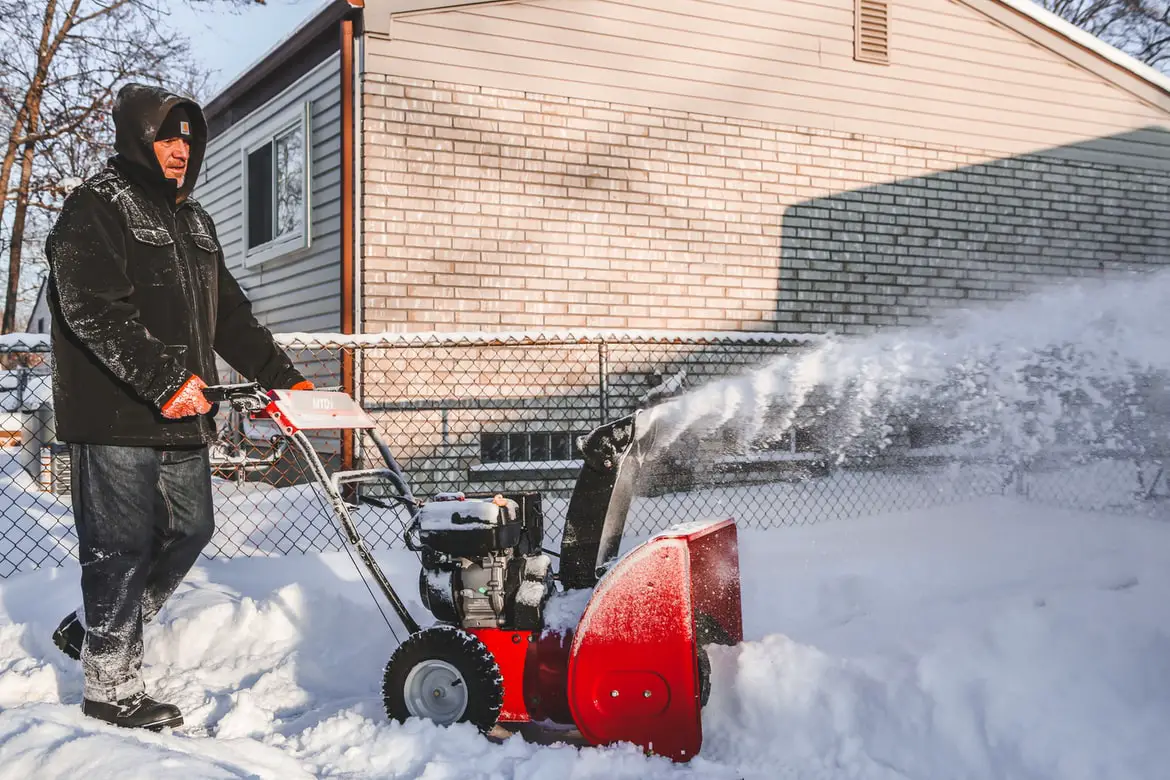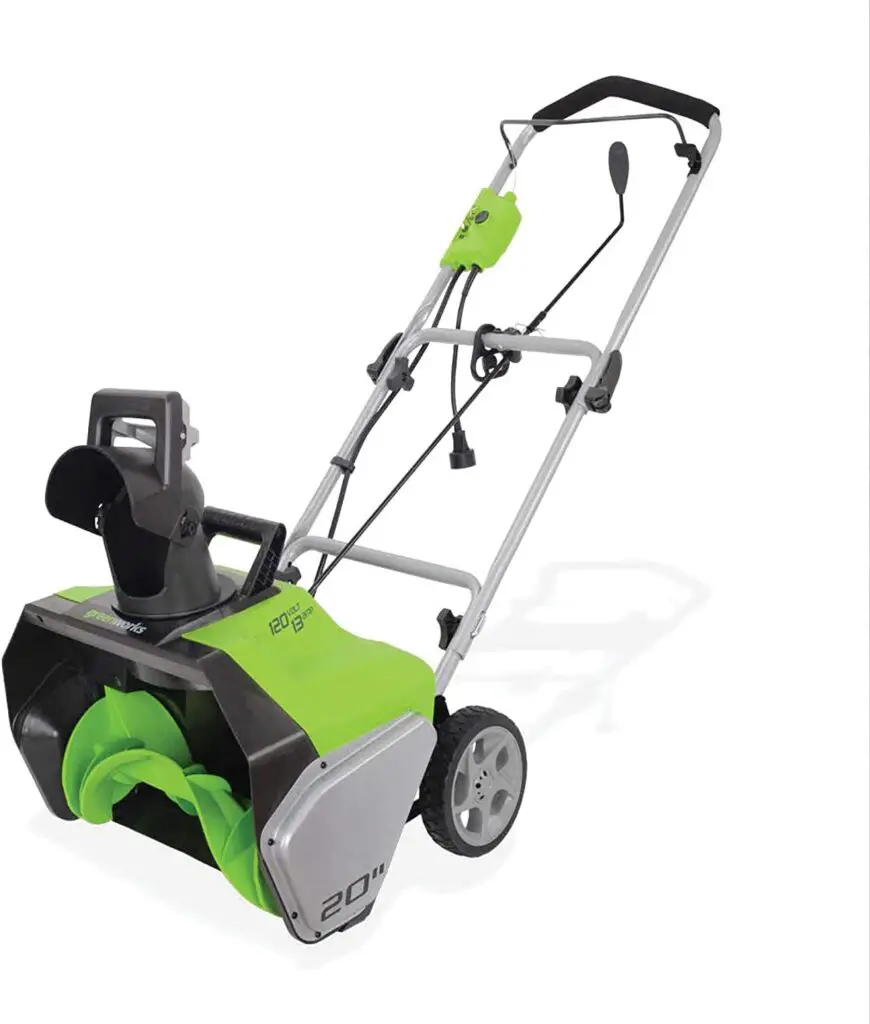Your cart is currently empty!

Snow Blower Buying Guide and Review
Shoveling snow, whether it’s a moderate snowfall or a large blizzard, can be a chore. Using a high-powered snowblower to complete the task saves time and effort. This equipment is incredibly beneficial if you live in a location where snowfall is regular and heavy in the winter.
Let’s take a look at each type of snow blower so you can acquire the best one for your house.
Table of Contents
- The Best Snow Blowers Reviewed
- What Are The Different Types of Snowblowers
- What Are Some Features of Snow Blowers
The Best Snow Blowers Reviewed
These are some of the best snow blowers available today on the market.

WORX WG471 40V Power Share 20″ Cordless Snow Blower with Brushless Motor
| Brand | WORX |
| Power Source | Battery Powered |
| Item Dimensions LxWxH | 44.49 x 21.26 x 37.4 inches |
| Item Weight | 47.2 Pounds |
| Color | Black and Orange |
| Maximum Throw Distance | 20 Feet |
| Voltage | 40 Volts |
Two Power Share batteries provide this snowblower with gas-like power, without all the drawbacks of using gasoline. Gives it the force to grind through compacted snow and ice like larger blowers, but in a smaller, maneuverable design.
Worx Power Share is compatible with all Worx 20v and 40v tools, outdoor power, and lifestyle products. Generates more power yet uses less battery than motors based on a brush design—it has a longer lifespan, too. Throw your snow up to 20 feet in any direction you choose, and the one-touch multi-position adjustable chute deflector gives you even better aim
| PROS | Easy to assemble, lightweight. Easy to Operate.Quiet. Good battery life.Dual-battery |
| CONS | The blade assembly is Hard |

Snow Joe 24V-X2-SB18 48-Volt iON+ Cordless Snow Blower
| Brand | Snow Joe |
| Power Source | Battery Powered |
| Item Dimensions LxWxH | 40 x 19 x 40 inches |
| Color | Blue |
| Maximum Throw Distance | 20 Feet |
1200 W brushless motor clears up to 14 tons of snow per charge, 4-blade rubber-tipped steel auger clears a path 18” wide x 10” deep in a single pass. Included 2x 4. 0 Ah batteries offer up to 40 minutes of rechargeable runtime.
2 W LED headlight lights up the night for safer nighttime clearing, Adjustable chute crank rotates chute up to 180º to throw snow up to 20 ft away in any direction
| PROS | 2 W LED headlight, Easy to use, lightweight. Easy to assemble, Easy maintenance Cordless, The batteries swap out very easily |
| CONS | No quick battery charging option |

Greenworks 13 Amp 20-Inch Corded Snow Thrower
| Brand | Greenworks |
| Power Source | Corded Electric |
| Item Dimensions LxWxH | 31 x 21.6 x 37 inches |
| Item Weight | 30 Pounds |
| Color | Green |
| Maximum Throw Distance | 20 Feet |
| Wheel Size | 7 Inches |
13 amp motor delivers powerful results for gas alternative, Adjustable 180 degree directional chute makes snow throwing manageable; Easy electric start for hassle-free operation. Discharge snow up to 20-feet. 7-inch wheels for greater mobility, Only works on 120 volts; 20-inch clearing path and 10-inch clearing depth.
| PROS | Lightweight and Easy to use. Easy to assemble Easy to use, The Push button makes it easy to turn on. Affordable Price |
| CONS | Small Wheels |
What Are The Different Types of Snowblowers
Electric Snowblowers: For light snow and small regions, an electric snow blower is an ideal answer. A corded model gives you the range you need to clear tiny spots of snow on small properties. A battery-powered model provides a longer range for clearing small snowstorms if you require more movement or need to clear a somewhat bigger space.
Electric snow blowers require no oil changes or fill-ups and are completely maintenance-free. You’ll be cleaning your driveway in seconds with just a cold-weather extension cord and an electrical outlet.
Single-Stage – In its most simple terms, these single-stage gas-powered snow blowers only hurl snow once, with an auger that picks it up and throws it out the chute. These gas-powered machines are the lightest, tiniest, and most maneuverable.
They come with a few basic features and attachments, and they’re ideal for suburban locations with modest snowfall. This price level may be ideal for you if you don’t mind clearing your driveway numerous times during a blizzard.
Dual-Stage – A dual-stage snow blower is built to throw snow further and handle heavier snowfalls. With a tiny blower, long and wide driveways can be difficult to clear since snow can be blown back onto the surface. A dual-stage device, which has an impeller behind its auger, throws snow and ice further than its competitors. A dual-stage model’s auger does not make touch with the ground.
These blowers are distinguished by the fact that they throw the snow twice. The snow and ice are first scooped off using a metal auger. The snow is then thrown out through the discharge chute by a high-speed rotor, which keeps the snow moving and prevents the intake bucket from being clogged.
Three-Stage – Three-stage snow blowers are designed to withstand the harshest winters and the hardest snow and ice. If you’re from the snow removal industry, a three-stage snow blower can throw more heavy snow and ice faster, allowing you to finish faster and go on to the next home. Sharpened augers are standard on most triple-stage models to help cut through slush and solid ice. This will save you the trouble of having to chip through ice patches later.
The Snowblower is the most powerful and efficient on the market. The snow and ice are first scooped away by two metal augers. The snow is then moved to the middle of the machine, where an accelerator cuts and pushes it through the impeller, launching it at high speed out of the chute.
What Are Some Features of Snow Blowers
Your specific demands and preferences will determine which snowblower model is best for you. Here’s a rundown of some major snowblower specs and why they’re crucial to think about:
Engine sizes – Engine size is important to consider because it impacts how much horsepower your snowblower produces and how much gas it consumes. From consumer-grade 200 cc engines to medium 200 to 400 cc engines to professional-grade 400+ cc engines, engine size is an important component to consider. Larger engines allow for faster drive systems and smoother handling, although they aren’t usually required for the typical driveway.
Fuel types – Gasoline’s chemical components stratify and degrade with time, affecting its performance significantly. For its gas-powered outdoor equipment, Cub Cadet recommends STA-BIL fuel additive and stabilizer. Using a gasoline fuel stabilizer addition will extend the active life of the gasoline and prevent future fuel system issues. With more horsepower, the machine becomes larger and more efficient. Horsepower outputs for snowblowers with engines ranging from 200 to 400 cc can range from six to the mid-twenties.
Throwing distance – Throw range relates to how far your snowblower can throw snow and, as a result, how much time it will take you to clear your driveway. For short driveways, a lesser throwing distance will suffice, but for larger driveways, a longer throwing distance will be required to reach the edge.
Leave a Reply